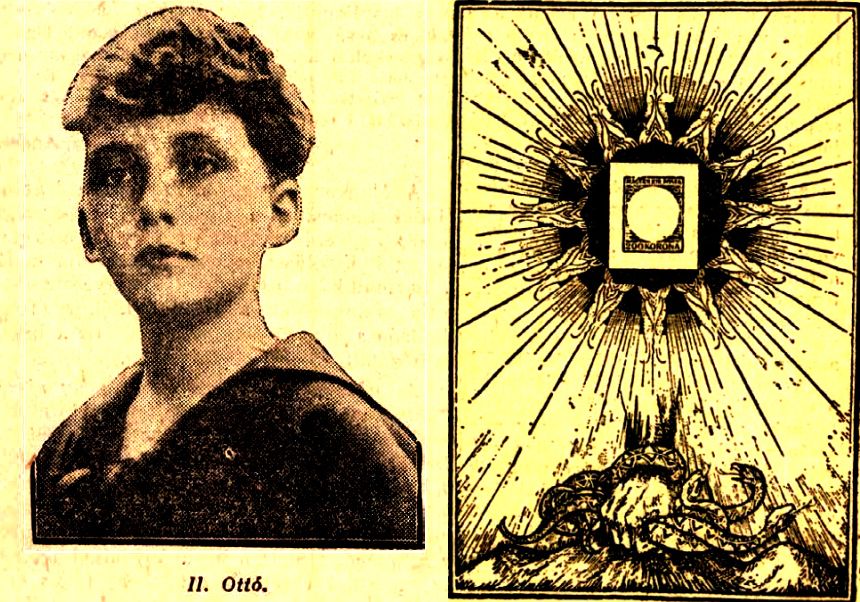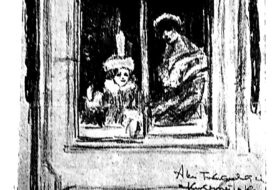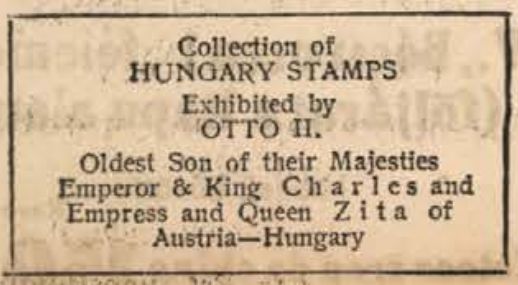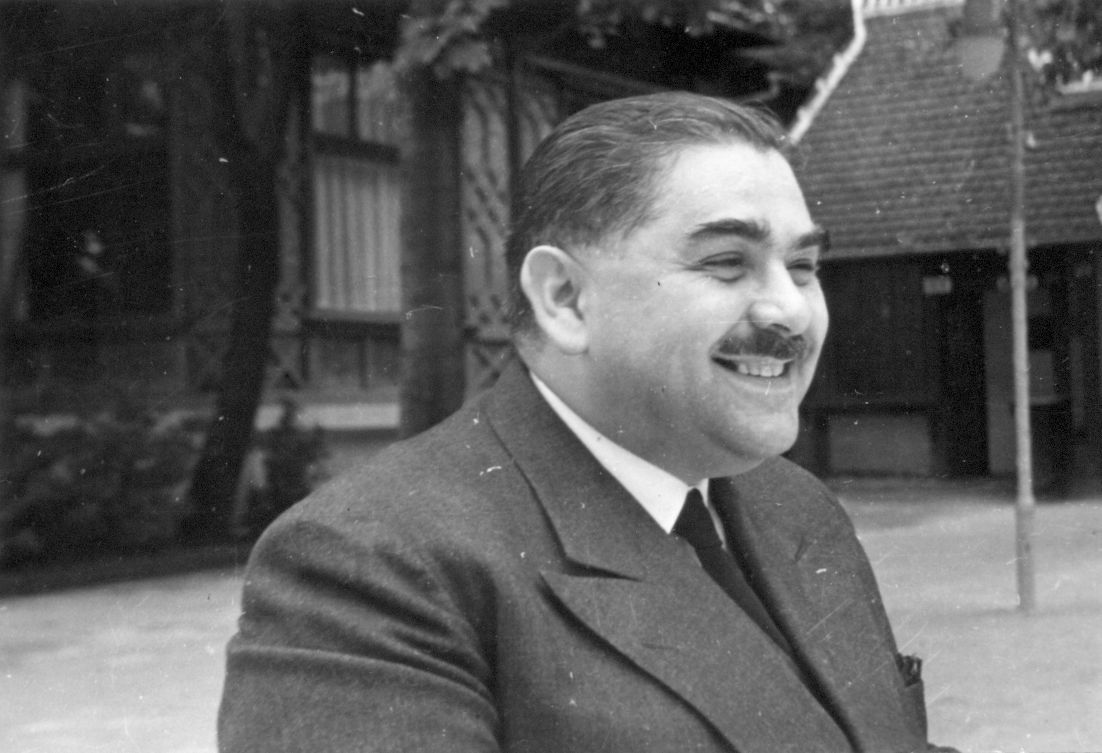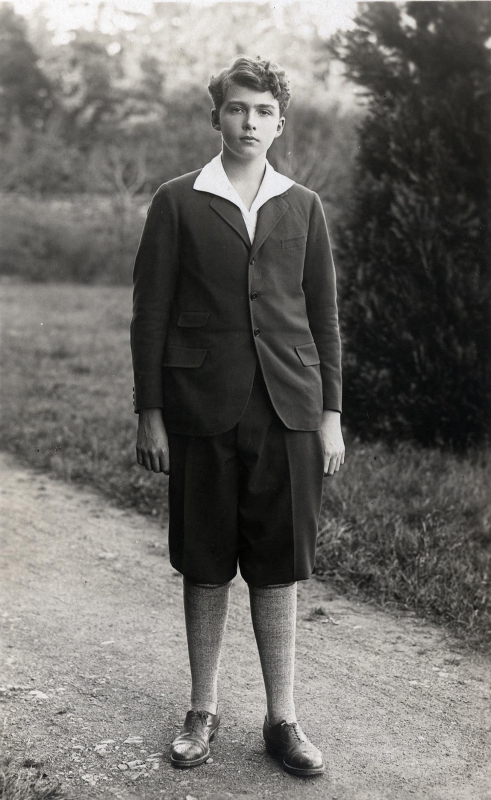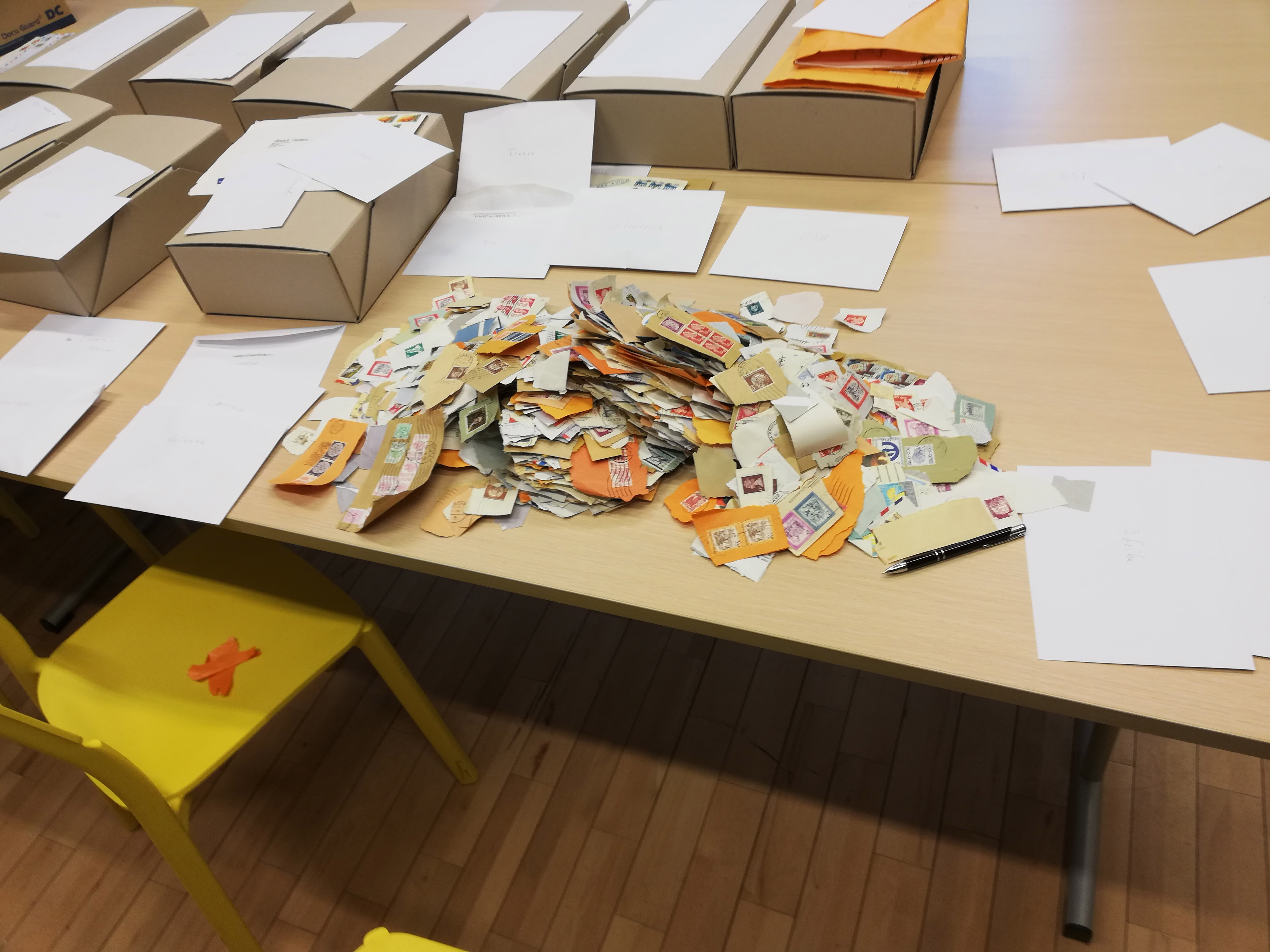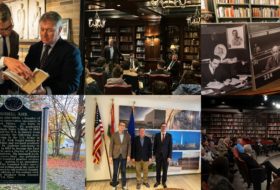György Szűcs, who worked as an art historian at the Hungarian National Gallery, researched the life of the painter and graphic artist Jenő Haranghy. In his letter dated 25 November 1989 he approached Otto von Habsburg for information on his research, because he gained knowledge – out of courtesy of the artist’s widow – that a few of Haranghy’s work could have been found in Otto von Habsburg’s stamp collection. He was inquisitive whether this collection had still been in the possession of the Crown Prince and if so, would it have been possible for him to make copies of the pages to put them in his thesis on Haranghy’s heritage. Szűcs even attached a copy of Haranghy’s graphic about the 1916 coronation of Charles IV and inquired about the original drawing.
Jenő Haranghy’s drawing about the coronation
(Source: Otto von Habsburg Foundation)
Szűcs’s letter has several annexes, from which the first two contains Örvös János’s report from the daily newspaper “Újság” published on 7 November, 1926. Örvös wrote about the stamp collection being showcased at the New York International Stamp Show. Based on the report, we can gain an in-depth insight of Otto von Habsburg’s stamp collection.
The New York International Stamp Show opened on October 16 1926, and welcomed guests for eight days, among whom were many illustrious. The President of the United States, John Calvin Coolidge, also addressed the opening ceremony and looked with appreciation at the pages of Otto von Habsburg’s collection. Hungarians living in the United States also spoke with great enthusiasm about the young Otto von Habsburg and his stamp collection from Lequeitio, Spain.
The huge halls of the Grand Central Palace were filled with stamp specialties from all over the world. In addition to the rare stamps, those interested could also encounter unexpected sensations. In addition to the stamps exhibited in many cases without any artistic sophistication, guests were amazed by the gorgeous hand-painted leather-bound album cover of Otto von Habsburg’s collection. The coat of arms of Hungary shone on the cover of the album, in gold and silver, in such a way that the frame formed a large letter “0”. The whole sheet was dominated by a cross figure.
Illustration of Ujság
(Source: Arcanum Digital Library)
The album pages were filled with stamps of Hungary, in a variety of artistic frames. According to the author of Ujság, this was beautiful leatherwork, however, not a single coloured-image of this work has survived, so we can only reconstruct its colours from the description. Undoubtedly a masterpiece of applied art. The first page of the album could be found on a separate board, in an ornate frame with this subtitle:
Stamps of Greater Hungary: between 1871 and 1918.
The correspondent of Est reported on the event: “I visited the stamp exhibition, looking for Otto’s collection. I soon found it among the huge glass-covered boards that stretched like street lines, because everyone knows about the collection. It is a curiosity because of the exhibitor and since it is the most artistic exhibition object. A separate sign draws attention to it with this inscription: “Collection of Hungary Stamps Exhibited by Otto H. Oldest Son of their Majesties Emperor & King Charles and Empress and Queen Zita of Austria-Hungary”
Illustration of Est
(Source: Arcanum Digital Library)
The exhibition material was so unique that the enthusiastic correspondent of Ujság also wrote, “no princes’ could be any different!” He then continued, “it was the sensation of this international stamp exhibition that the exhibitor of this royal collection is a real ‘king’, a brilliant-eyed beautiful child who, in an unsophisticated pose, enchants all viewers in his photograph above the album”.
From the article we learn that correspondents from renowned newspapers wrote their multi-column articles about Otto von Habsburg’s album. Charles Lathrop Pack, the president of the exhibition himself presented it to President Coolidge. The album covers and the decorations on the sheets were the work of the teachers of the Budapest School of Applied Arts. According to the article, the President also praised the artistic work by Jenő Haranghy.
Jenő Haranghy
(Source: MaNDA, MKVM)
The album was not featured in the exhibition in its entirety. The presented sheets were arranged by years, with colours and meticulous elaboration reminiscent of the illustrations of the medieval codices. According to the article, there were always many people standing in front of the collection, even though its value was much lower than the other rare stamps on display.
According to the Est correspondent, the whole world was represented; some countries, such as Austria, Germany, Sweden and Canada also showcased official material. Only Hungary and Hungarian collectors stayed away. One of the reasons behind was the global economic crisis and the fact that it would have been very difficult to export a collection after World War I. This explains why Otto von Habsburg was the only Hungarian exhibitor.
Outstanding Hungarian stamp collectors, who could also be called the young king’s advisers, asked Queen Zita to let him contribute to the exhibition, because it would attract the attention of the foreign public. The Queen accepted this request. According to the report, Otto after reviewing the collection once more, handed it over to one of his Hungarian admirers, who took it to New York personally. Eugene Klein organized the exhibition of Prince Otto’s collection and presumably it was him, who took the album overseas. Klein stayed in New York until the opening, then returned to Spain, where he shared his experience with Otto von Habsburg.
Otto von Habsburg in 1926
(Source: Bildarchiv Austria)
For the first time, Jenő Haranghy only made artistic albums for Hungarian stamps that were put on the market until 1918, so the little prince’s collection was complete only until then. “He looked at the beautiful pages and interesting stamps with great pleasure, but he was by no means satisfied with one thing: namely, that his collection ended in 1918. Once again, he came up with his request: >> I also want to collect the stamps on which the pictures of my father and mother were overprinted by bad people with the word ‘republic’ and all the other stamps that have since appeared in Hungary<<”
Stamps with the portrait of King Charles IV
(Source: NSZL Digital Image Archive)
Otto received the necessary supplementary sheets marked with a postage horn with a thorn wreath: the Republican page with a Phrygian cap, the Bolshevik page depicted with thorns spilling blood droplets, and the pages of the Petőfi and Jókai stamps decorated with literary motifs. The stamp collection thus became a mirror of Hungarian history.
The above coverage contains important information about the collection. Elizabeth Gelsey wrote in one of her letters that Otto von Habsburg remembers fondly on the stamp collection, which was “amazingly beautiful. Unfortunately, it was stolen along with several other valuables when the house in Tuxedo Park, where Queen Zita lived in America at the time, was broken into in 1948.” The album was never found.
Otto von Habsburg continued to collect stamps despite the loss. This is evidenced by the collection of stamps managed by the Otto von Habsburg Foundation. After exploring the four large boxes, a kind of pre-arrangement was made, the material was sorted by country, and placed in 18 acid-free archive storage boxes. The copies of the stamps preserved here may presumably be additional pieces to a more serious collection, based on their preliminary identification, covering the period from 1945 to 2010.
Of the 18 boxes, 15 contain European stamps. A total of 2 boxes of material come from the American continent. 1 container is filled with stamps and envelopes from Asia, Africa and Australia. First-day envelope stamps are also among the collection pieces, including a Soviet ensign issued in 1946.
Otto von Habsburg Foundation, stamp collection under construction
(Photo: Otto von Habsburg Foundation)
The above examples show that Otto von Habsburg collected stamps throughout his long life and all the memories he could regain about his parents. Unfortunately, the currently known stamp collection does not include complete albums or pre-1940s stamps; they are either hiding elsewhere or stolen like Haranghy’s album. The stamp collection of the Otto von Habsburg Foundation, on the other hand, includes a large number of stamped envelopes sent to Otto von Habsburg by prominent personalities, as well as many stamps of greater value. Therefore, the collection may well deserve more in-depth philatelic interest.
Dr. József Fekete PhD
